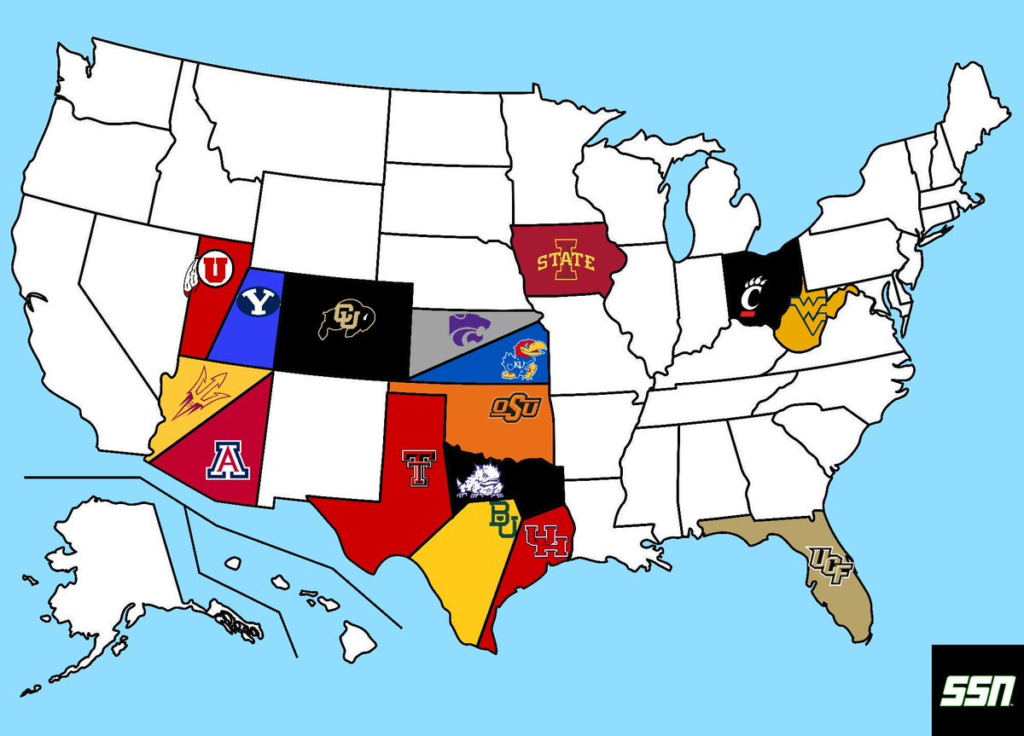The recent moves in conference realignment have significantly altered the landscape of college athletics, and at the forefront of these changes stands the Big 12 Conference. Under Brett Yormark’s strategic leadership, the Big 12 has undertaken a series of expansions that have not only reshaped its own structure but also influenced the broader dynamics of collegiate sports. This article delves into the critical insights from YormarkYormark’soves, analyzing the implications for the conference and the wider sports community.
The Genesis of Expansion: YormarkYormark’s
When Brett Yormark assumed the role of Big 12 Commissioner, he inherited a conference at a crossroads. The departure of marquee programs like Texas and Oklahoma to the SEC left a void many feared would lead to the conference. However, Yormark approached this challenge with a proactive and visionary mindset. He recognized the necessity of expansion not merely as a defensive measure but as an opportunity to redefine the Big 12’s id12’sty and enhance its competitive stature.
YormarkYormark’s centred on two core principles: increasing the conference’s geographic footprint and bolstering its marketability. By extending the Big 12’s re12’sinto new regions, Yormark aimed to tap into fresh fan bases and recruiting grounds, enhancing the confereconference’sl appeal. His strategy also emphasized securing schools with vital athletic programs and marketable brands to ensure that the Big 12 remained a formidable player on the national stage.

Strategic Acquisitions: A Diverse Portfolio
The execution of YormarkYormark’s saw the Big 12 welcoming a diverse array of institutions. The additions of the BYU, Cincinnati, Houston, and UCF brought a new dynamism to the conference. Each school brings unique strengths that collectively enhance the Big 12’s pr12’se.
With its national following and robust football program, BYU injects significant viewership and competitive excellence. Cincinnati’s success in football, culminating in a College Football Playoff appearance, underscores its potential to be a consistent contender. Houston, located in one of the nation’s most popular markets, offers valuable media exposure and recruiting advantages. Meanwhile, UCF’s rUCF’s ascent in football and its location in the fertile recruiting grounds of Florida make it a strategic addition.
These acquisitions replace the departing Texas and Oklahoma and position the Big 12 for long-term growth. The conference now boasts a presence in key regions across the United States, from the Rocky Mountains and the Midwest to the Gulf Coast and the Southeast. This geographic diversity is a testament to YormarkYormark’sgic foresight.
Financial Implications: A Sustainable Model
One of the critical aspects of Yormark’s strategy has been ensuring the financial sustainability of the Big 12 expansion. Adding new members was carefully calculated to enhance the conference streams rather than dilute them. With lucrative media rights deals and increased market presence, the Big 12 is poised to command higher broadcast fees and sponsorships.
YormarkYormark’sch also included renegotiating television contracts to reflect the conference’s expanded and more competitive nature. By securing favourable media deals, he has ensured that each member institution benefits from the increased revenue, thus making the expansion a financially viable endeavour. The influx of new markets and fan bases means more significant viewership, higher game attendance, and more significant merchandising opportunities, all contributing to a robust economic model for the conference.
Competitive Balance: Enhancing the Playing Field
The expansion under Yormark’s leadership is not just about financial gains and geographic reach but also about enhancing the competitive balance within the Big 12. Including solid athletic programs ensures that the conference remains competitive in various sports, particularly football and basketball.
The Big 12’s re12’stion as a football powerhouse is set to continue with the addition of schools like Cincinnati and UCF, which have shown their mettle on the national stage. Meanwhile, basketball enthusiasts can look forward to a bolstered lineup that promises exciting matchups and high-stakes competition. By maintaining a high level of athletic excellence, the Big 12 can attract top-tier talent and retain its position as a premier conference.
Cultural Integration: Building a Cohesive Conference
Integrating new members into the Big 12’s ex12’sng framework is a complex process that goes beyond logistical and financial considerations. Yormark has emphasized the importance of cultural integration to ensure that the new institutions align with the confereconference’s and traditions. This involves fostering a sense of community and shared identity among member schools.
Building cohesion includes facilitating inter-institutional collaboration, promoting cross-school rivalries, and encouraging student and alumni engagement. These initiatives aim to create a unified conference culture that resonates with all members, old and new. By building a cohesive identity, the Big 12 can strengthen its brand and ensure long-term stability.
Challenges and Future Prospects
Despite the strategic planning and execution, the Big 12 expansion under Yormark Yormark’s ship is not without challenges. Integrating new members presents logistical hurdles, such as aligning scheduling and travel arrangements. Additionally, there is the task of maintaining competitive equity, ensuring that the influx of new teams does not disrupt the existing balance.

Moreover, the broader landscape of college athletics continues to evolve, with potential further realignments and the ongoing impact of Name, Image, and Likeness (NIL) regulations. Yormark and his team must remain adaptable and forward-thinking to navigate these changes effectively. However, Yormark’s strategic foundation provides a robust platform for addressing these challenges.
The Big 12 is well-positioned to capitalize on its recent expansions. The conference’s geographic reach and competitive balance create opportunities for growth in viewership, recruitment, and revenue. By continuing to innovate and adapt, the Big 12 can solidify its status as a leading force in college athletics.
Conclusion: A New Era for the Big 12
Brett Yormark Yormark’s moves have ushered in a new era for the Big 12 Conference. Through calculated expansions and a forward-thinking approach, Yormark has redefined the conferenconference’spe, positioning it for long-term success. The addition of BYU, Cincinnati, Houston, and UCF brings new strengths and opportunities, enhancing the Big 12’s com12’stive and financial standing.
As the conference navigates the challenges of integration and the evolving college athletics environment, Yormark’Yormark’sprovides a guiding framework. The Big 12’s exp12’son is not just about adding teams; it is about building a cohesive, competitive, and financially sustainable conference that can thrive in the dynamic world of college sports. With these strategic moves, the Big 12 is set to embark on a promising new chapter, offering exciting possibilities for its member institutions, athletes, and fans.
Also, Read The Following: applications of generative AI in healthcare.








